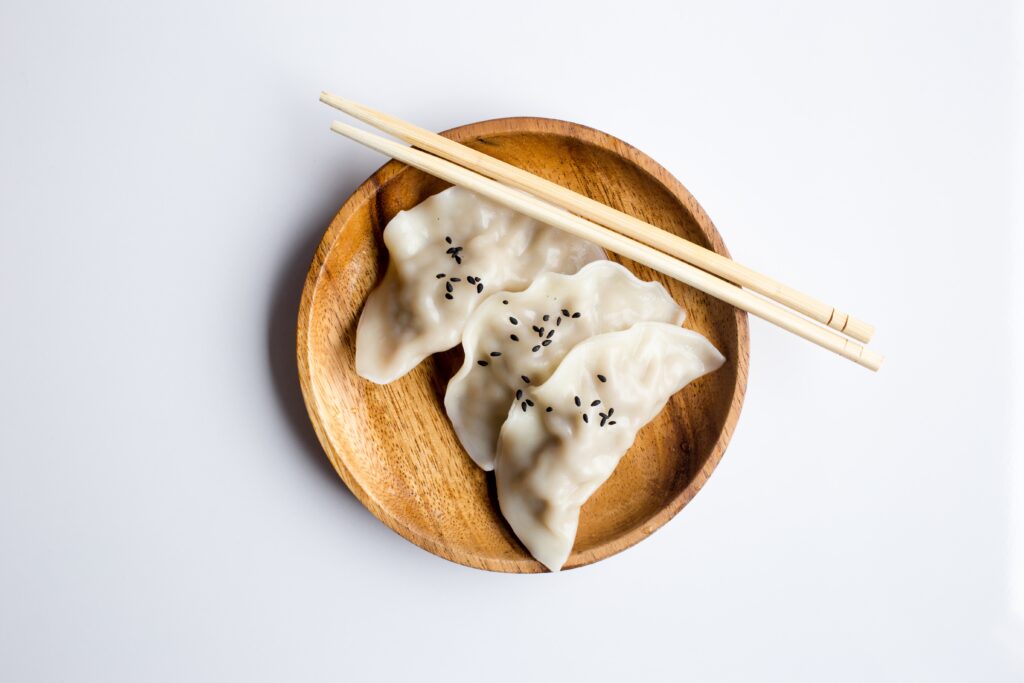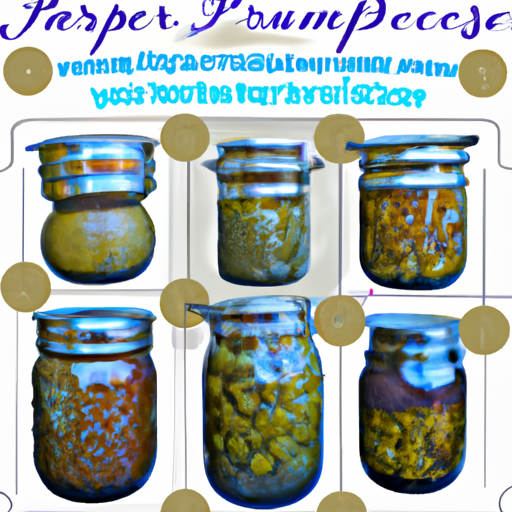Are you a beginner in the world of pressure canning? Wondering if there are any common mistakes you should be aware of? Look no further! In this article, we will explore the potential pitfalls that many people encounter when pressure canning. By understanding these common mistakes, you can ensure a successful and safe canning process, preserving your favorite fruits and vegetables with confidence. Whether it’s overfilling jars, using improper canning techniques, or neglecting to follow essential safety guidelines, we’ve got you covered. So, let’s dive into the world of pressure canning together and ensure that your canning adventures are smooth sailing from start to finish!

Not Following Proper Canning Procedures
Skipping the Pre-Canning Steps
One common mistake to avoid when pressure canning is skipping the pre-canning steps. These steps are essential for ensuring the safety and quality of your canned goods. Pre-canning steps include gathering all necessary equipment and ingredients, thoroughly cleaning and sterilizing your canning equipment, and preparing your jars and lids. By skipping these steps, you increase the risk of contamination and spoilage in your canned products.
Using Inaccurate or Unreliable Recipes
Another mistake to avoid is using inaccurate or unreliable recipes. It is crucial to use recipes that have been tested and approved by reputable sources, such as government food safety organizations or trusted canning experts. Using unreliable recipes can lead to improperly processed food, which can result in foodborne illnesses or spoiled products. Always double-check the source and accuracy of the recipe before proceeding with canning.
Neglecting to Clean and Sterilize Equipment
Neglecting to clean and sterilize your canning equipment is a common mistake that can compromise the safety of your canned goods. Before each use, ensure that all canning equipment, including jars, lids, and utensils, is thoroughly cleaned and sterilized. This removes any potential bacteria or contaminants that could affect the quality and preservation of the food. Neglecting to clean and sterilize equipment can lead to spoilage or bacterial growth in your canned products.
Ignoring the Recommended Processing Times
Ignoring the recommended processing times is another mistake to avoid when pressure canning. Each recipe has specific processing times that must be followed to ensure the food reaches the necessary temperature for safe preservation. Deviating from these processing times can result in under-processing, which means the food may not be thoroughly cooked or sterilized, leading to potential spoilage or foodborne illnesses. It’s essential to closely follow the recommended processing times stated in your chosen recipe.
Not Checking for Spoilage
One crucial mistake to avoid is not checking for spoilage in your canned goods. After the canning process, it’s essential to inspect each jar for signs of spoilage, such as bulging lids, unusual odors, or visible mold. Failing to check for spoilage can result in consuming contaminated food, which can be harmful to your health. Always examine your canned products before consuming or storing them to ensure they are safe to eat.
Choosing Inappropriate Canning Recipes
Selecting Unreliable or Unapproved Recipes
Choosing unreliable or unapproved recipes is a mistake that can lead to unsafe canned products. It is important to select recipes from trustworthy sources, such as reputable canning guides, government databases, or experienced canners. These recipes have undergone testing and adhere to the necessary safety guidelines. By choosing unapproved recipes, there is a greater risk of improper processing, which can result in spoiled or potentially dangerous canned goods.
Failing to Adjust Recipes for Altitude
Altitude plays a crucial role in pressure canning. Higher altitudes require adjustments in processing times and pressure to ensure safe preservation. Failing to adjust recipes for altitude can lead to under-processing or over-processing, both of which can compromise the safety and quality of your canned goods. Always refer to altitude adjustment guidelines or consult reliable sources to ensure proper processing for your specific altitude.
Using Recipes with Ingredients Not Suitable for Canning
Using recipes with ingredients that are not suitable for canning is a common mistake to avoid. Certain ingredients, such as dairy products or low-acid vegetables, require special processing methods or cannot be safely canned using standard pressure canning techniques. It’s important to choose recipes that are specifically intended for canning, or adapt regular recipes using approved canning guidelines. Using unsuitable ingredients can result in the growth of harmful bacteria or spoilage in your canned products.
Ignoring Specific Canning Guide Instructions
Each canning guide or resource provides specific instructions and guidelines for safe canning practices. Ignoring these instructions can lead to inconsistencies in the canning process, potentially compromising the safety and quality of your canned goods. It’s important to carefully read and follow the instructions provided in your chosen canning guide or resource to ensure proper canning techniques and achieve optimal results.
Improperly Adapting Regular Recipes for Canning
Adapting regular recipes for canning without proper knowledge or guidelines is a mistake to avoid. Regular recipes may require adjustments in acidity, processing times, or other factors to ensure safe preservation through pressure canning. Improper adaptations can result in under-processing or over-processing, leading to spoilage or unsafe canned goods. It’s crucial to follow approved adaptations for regular recipes, consult reliable sources, or seek guidance from experienced canners when modifying recipes for canning.
Using Incorrect or Defective Equipment
Using Old or Damaged Pressure Canners
Using old or damaged pressure canners can compromise the safety of your canning process. Over time, pressure canners may lose their ability to maintain proper pressure or temperature, leading to inadequate processing or uneven cooking. It’s important to regularly inspect your pressure canner for any signs of wear, such as damaged seals, dents, or malfunctioning parts. If you notice any issues, it’s advisable to replace or repair the canner to ensure the effectiveness and safety of your canning process.
Neglecting to Replace Worn Gaskets or Seals
Neglecting to replace worn gaskets or seals in your pressure canner is a mistake that can result in ineffective sealing or inadequate pressure maintenance. Gaskets and seals deteriorate over time, which can compromise the airtight seal necessary for safe canning. It’s essential to regularly inspect and replace worn or damaged gaskets or seals to maintain proper pressure and prevent any risks of spoilage or contamination.
Using Improper Gauges or Equipment Parts
Using improper gauges or equipment parts can lead to inaccurate pressure readings or malfunctioning canning equipment. It’s crucial to ensure that you are using the correct gauges and equipment parts specified for your pressure canner. Using incompatible or inaccurate gauges can result in under-processing or over-processing, which can compromise the quality and safety of your canned goods. Always refer to the manufacturer’s instructions and guidelines when selecting and using equipment parts for pressure canning.
Failing to Maintain Proper Pressure Levels
Maintaining proper pressure levels throughout the canning process is vital for safe preservation. Failing to monitor and adjust pressure levels can result in under-processing or over-processing, potentially leading to unsafe canned goods. It’s important to closely follow the recommended pressure levels stated in your recipe and regularly monitor the pressure gauge during the canning process. Make any necessary adjustments to ensure the pressure is maintained within the appropriate range for your chosen recipe.
Not Using Standard-Sized Canning Jars
Using non-standard-sized canning jars can affect the heat distribution and processing times during pressure canning. It’s crucial to use standard-sized canning jars recommended for pressure canning to ensure even heat distribution and proper processing. Non-standard-sized jars may not fit properly in your canner or may require adjustments in processing times, leading to inconsistent results. Stick to the appropriate jar sizes specified in your recipe to achieve optimal canning outcomes.
Improper Preparation and Handling of Food
Using Poor-Quality or Spoiled Ingredients
Using poor-quality or spoiled ingredients is a mistake to avoid when pressure canning. The quality and freshness of the ingredients directly impact the safety and taste of your canned products. Using poor-quality ingredients can lead to subpar results or potential spoilage, while using spoiled ingredients poses health risks. It’s essential to use fresh, high-quality ingredients when pressure canning to ensure the best possible outcome and minimize the chances of spoilage or foodborne illnesses.
Underestimating the Importance of Proper Food Preparation
Proper food preparation is vital for successful pressure canning. Underestimating the importance of thorough washing, peeling, and cutting of ingredients can result in inadequate processing or compromised food safety. Ensure that all ingredients are properly washed, peeled, and cut to the appropriate size before canning. This helps to eliminate potential contaminants and ensures even heat distribution during processing, reducing the risk of spoilage or under-processing.
Overfilling or Underfilling Canning Jars
Improperly filling canning jars is a common mistake that can affect the safety and quality of your canned goods. Overfilling jars can lead to inadequate sealing or increased risks of food spoilage, while underfilling can result in excessive headspace and potential loss of quality. It’s important to adhere to the recommended fill levels specified in your recipe to ensure proper heat distribution and sealing during the canning process. Each recipe may have different requirements, so carefully follow the guidelines to achieve optimal results.
Neglecting to Remove Air Bubbles
Failing to remove air bubbles from the filled canning jars can compromise the quality and preservation of your canned goods. Air bubbles can prevent proper heat penetration and create pockets where spoilage organisms may grow. It’s crucial to run a plastic or wooden utensil along the inside of the jar to release trapped air bubbles before sealing. This ensures efficient heat distribution and reduces the risk of spoilage or under-processing in your canned products.
Sealing Jars with Inadequate Lid Tightness
Sealing jars with inadequate lid tightness is a mistake that can result in failed seals and potential spoilage of your canned goods. It’s important to follow the recommended lid tightening instructions for your specific canning method. Over-tightening or under-tightening can affect the sealing process and lead to compromised seals. Ensure that lids are tightened just enough to hold them in place during canning, allowing the necessary air escape during processing for a proper seal.

Ignoring Safety and Quality Control Measures
Failing to Conduct Regular Inspections of Canned Food
Regular inspections of your canned food are essential for ensuring safety and quality. Ignoring these inspections can result in the consumption of spoiled or potentially dangerous food. It’s important to periodically check your canned goods for signs of spoilage, such as bulging lids, off-putting odors, or abnormal textures. Discard any cans that show signs of spoilage to prevent health risks.
Neglecting to Follow Established Safety Guidelines
Neglecting to follow established safety guidelines is a mistake that can compromise the safety of your canned products. It’s important to familiarize yourself with the latest canning safety guidelines provided by reputable sources, such as government agencies or trusted canning organizations. Neglecting to follow these guidelines can result in under-processing, inadequate heat penetration, or other safety concerns. Stay up to date with the recommended safety practices to ensure the highest level of food safety in your canned goods.
Ignoring or Misinterpreting Test Results
Ignoring or misinterpreting test results during the canning process can have serious consequences. Test results, such as pressure canner gauge readings or acidity measurements, provide critical information about the effectiveness and safety of the process. Ignoring or misinterpreting these results can lead to under-processing, over-processing, or other quality issues in your canned goods. It’s essential to closely monitor and correctly interpret test results throughout the canning process to ensure proper preservation and safety.
Storing Cans in Inadequate Conditions
Storing cans in inadequate conditions can compromise the quality and safety of your canned goods. Improper storage conditions, such as exposure to extreme temperatures, excessive moisture, or direct sunlight, can lead to accelerated spoilage or loss of quality. It’s crucial to store your canned products in a cool, dry, and dark place to maintain their optimal quality and extend their shelf life. Always follow recommended storage guidelines to ensure the safety and enjoyment of your canned goods.
Not Labeling Canned Products Properly
Properly labeling your canned products is vital for organizational purposes and ensuring food safety. Neglecting to label your cans with the date of processing or the contents can lead to confusion and potential consumption of expired or unsafe food. It’s important to label each can with the relevant information, including the date of canning, the contents, and any specific processing instructions. This helps you keep track of the freshness and safety of your canned goods and prevents accidental ingestion of compromised or expired food.
Rushing or Shortcutting the Canning Process
Not Allowing Jars to Process for the Recommended Time
Rushing the canning process by not allowing jars to process for the recommended time is a mistake that can compromise the safety and quality of your canned goods. Each recipe specifies a required processing time to ensure the food reaches the necessary temperature for safe preservation. Cutting short the processing time can result in under-processing, which means the food may not be adequately cooked or sterilized, leading to potential spoilage or foodborne illnesses. It’s crucial to be patient and follow the recommended processing time stated in your chosen recipe.
Removing Jars Too Soon from the Canner
Removing jars too soon from the canner can have detrimental effects on the safety and quality of your canned goods. After the processing time is complete, it’s important to let the canner pressure return to zero naturally before removing the jars. Rushing the process by removing the jars prematurely can lead to incomplete sealing or loss of vacuum, resulting in spoilage or decreased shelf life. Always exercise patience and wait for the canner pressure to stabilize before removing the jars.
Attempting to Cool Jars Rapidly
Attempting to cool jars rapidly after canning can impact the sealing process and compromise the safety of your canned goods. Rapid cooling can cause a sudden drop in pressure inside the jars, which can hinder proper sealing or even lead to jar breakage. It’s crucial to allow the canner and its contents to cool gradually at room temperature. Avoid exposing the jars to drastic temperature changes, such as placing them in cold water or in the refrigerator immediately after canning. Allow the jars to cool naturally to ensure optimal sealing and preservation.
Skipping the Pressure Release Step
Skipping the pressure release step in a pressure canner is a mistake that can lead to unsafe conditions. Pressure canners require a gradual release of pressure after the processing time is complete. This step allows the pressure inside the canner to return to atmospheric levels, ensuring safe handling and opening of the canner. Avoid the temptation to rush this process by manually releasing the pressure or removing the weight from the canner prematurely. Skipping the pressure release step can result in safety hazards or damaged jars.
Exposing Jars to Drastic Temperature Changes
Exposing jars to drastic temperature changes before or after the canning process can compromise the safety and quality of your canned goods. Sudden changes in temperature can cause thermal shock, leading to jar breakage or improper sealing. It’s crucial to handle jars with care and avoid placing them in extreme temperature environments, such as direct sunlight, freezing temperatures, or hot surfaces. Gradual changes in temperature are essential to maintaining the integrity of the jars and ensuring proper preservation.

Insufficient Knowledge and Education on Pressure Canning
Lack of Understanding about the Basics of Pressure Canning
Lack of understanding about the basics of pressure canning is a common mistake that can lead to subpar results or safety risks. Before attempting pressure canning, it’s important to familiarize yourself with the fundamental principles and techniques involved in the process. Understand factors such as pressure levels, processing times, and altitude considerations. Take the time to educate yourself through reliable sources, guides, or training programs to ensure successful and safe pressure canning practices.
Inadequate Knowledge of Different Canning Methods
Inadequate knowledge of different canning methods can hinder your ability to select the appropriate method for specific foods. Pressure canning is just one method among others, such as water bath canning or steam canning. Each method has its own set of requirements and limitations depending on the acidity level, ingredients, and food safety considerations. It’s important to gain a comprehensive understanding of the various canning methods available and the specific situations where each method is recommended.
Failure to Seek Proper Guidance or Training
Failure to seek proper guidance or training is another mistake that can result in suboptimal pressure canning experiences. If you are new to pressure canning or unfamiliar with certain techniques, it is beneficial to seek guidance from experienced canners or attend canning workshops. These resources can provide valuable insights, tips, and troubleshooting advice to help you navigate the pressure canning process successfully. Taking the initiative to seek proper guidance and training ensures you are equipped with the knowledge to can safely and effectively.
Overlooking Relevant Resources and References
Overlooking relevant resources and references can deprive you of valuable information and best practices in pressure canning. There are numerous reputable sources available, such as government publications, canning guides, or online forums, that offer comprehensive information on pressure canning. By exploring these resources, you can broaden your understanding, stay informed about the latest guidelines, and benefit from the experiences and expertise of other canning enthusiasts. Make it a habit to consult reliable resources and references to enhance your pressure canning knowledge.
Absence of Continuous Learning and Improvement
Pressure canning is a skill that can always be improved and refined. Failing to engage in continuous learning and improvement can limit your ability to maximize the safety and quality of your canned goods. Stay curious and open to new insights, techniques, and discoveries in the field of pressure canning. Attend workshops, read updated guides, and connect with other canners to exchange knowledge and experiences. Cultivating a mindset of continuous learning and improvement allows you to elevate your pressure canning skills and outcomes over time.
Too Much Variation or Experimentation
Inconsistently Altered Recipes
Experimenting with recipe alterations can be exciting, but inconsistently altering recipes without proper knowledge can result in unsafe or unsatisfactory canned goods. If you are modifying pressure canning recipes to suit your taste preferences or dietary requirements, it’s important to understand the impact of each alteration on the safety and processing requirements. Inconsistent alterations can lead to inconsistent results, compromised safety, or spoilage. It’s crucial to document and measure any modifications consistently to maintain safe pressure canning practices.
Excessive Substitutions or Modifications
Excessive substitutions or modifications to pressure canning recipes can lead to unexpected outcomes. While slight modifications or substitutions may be acceptable, excessive changes in ingredients, proportions, or processing methods can affect the acidity levels, heat penetration, or preservation of the food. It’s important to understand food preservation principles and consult reliable sources or experienced canners for guidance when considering substitutions or extensive modifications. Careful consideration and moderation in substitutions help maintain the safety and quality of your canned goods.
Ignoring or Over-pushing Canning Limits
Ignoring or over-pushing the limits of pressure canning can result in compromised safety or quality. Each canning method, including pressure canning, has its own limitations and specific considerations. Ignoring these limits, such as canning low-acid foods without proper acidification or exceeding recommended capacities, can introduce safety risks or inconsistent results. It’s crucial to understand and respect the canning limits established for different techniques to maintain the integrity and safety of your canned goods.
Overcomplicating the Canning Process
Overcomplicating the canning process can lead to confusion, errors, or compromised outcomes. While it’s important to follow proper procedures, it’s equally essential to avoid unnecessary complexity. Attempting overly complex recipes or using overly sophisticated techniques without the necessary knowledge and experience can lead to subpar results. Strive for simplicity and prioritize mastering the basics of pressure canning before venturing into complicated recipes or techniques.
Inconsistency in Techniques or Procedures
Maintaining consistency in techniques and procedures is crucial for achieving consistent results and safe pressure canning practices. Deviating from recommended procedures, such as altering processing times, using unconventional methods, or inconsistently applying heat, can introduce variability, compromising the safety and quality of your canned goods. It’s important to establish a consistent approach by following approved techniques and procedures to ensure optimal outcomes and minimize the risk of spoilage or under-processing.

Lack of Patience and Complacency
Haste in Following Canning Timeframes
Hastiness in following canning timeframes can lead to incorrect processing and increased risks of spoilage. Each recipe specifies a recommended processing time that allows the food to reach the necessary temperature for safe preservation. Rushing the process by, for example, reducing the processing time can result in insufficient heat penetration or under-processing. It is important to exercise patience and adhere to the recommended processing timeframes to ensure the safety and quality of your canned goods.
Lack of Attention and Diligence during Canning
Lack of attention and diligence during the canning process can compromise the overall quality and safety of your canned goods. Canning requires focus and careful monitoring of all steps involved, such as checking pressure levels, inspecting jars, or following processing times. Inattentiveness can lead to mistakes, such as improper sealing, inaccurate pressure readings, or failing to detect signs of spoilage. It’s crucial to allocate dedicated time and energy to the canning process, ensuring that you pay attention to detail and maintain high standards of canning practices.
Failing to Observe Quality Check Steps
Failing to observe quality check steps during the canning process can result in unnoticed issues or potential risks. Quality check steps, such as inspecting jars for spoilage signs, checking lids for proper sealing, or confirming pressure readings, are essential for ensuring the safety and quality of your canned goods. Overlooking these steps can lead to the consumption of spoiled or under-processed food. It’s essential to prioritize the observation of quality check steps to validate the integrity and safety of your canned products.
Complacency with Previously Successful Canning
Becoming complacent with previously successful canning experiences can lead to a lack of vigilance and attention to potential risks. Even if you have had successful canning outcomes before, it’s important to maintain the same level of care and adherence to proper procedures. Each canning session presents unique variables and circumstances that may require adjustments or precautions. Avoid complacency, stay observant, and ensure every batch of canned goods receives the same level of diligence and attention to detail.
Ignoring the Importance of Continuing Education
Continuing education is vital for staying up to date with the latest canning techniques, safety guidelines, and industry advancements. Ignoring the importance of continuing education can result in stagnation and missed opportunities to improve your pressure canning skills. Keep an eye out for workshops, webinars, or new publications that can provide valuable insights and new best practices. By embracing continuous learning, you can enhance your canning knowledge, refine your techniques, and maintain the highest standard of safety and quality in your canned goods.
Failure to Monitor and Address Common Issues
Ignoring Common Signs of Spoilage
Ignoring common signs of spoilage during or after the canning process can have serious health consequences. Monitor your canned goods for signs such as bulging lids, unusual odors, or unnatural discoloration. Consuming spoiled food can lead to foodborne illnesses or other health risks. It’s important to promptly discard any cans that show signs of spoilage and investigate the cause to prevent future occurrences and potential contamination.
Neglecting to Correctly Deal with Mold or Leaks
Mold or leaks in canned goods must be addressed promptly and appropriately to prevent any health risks. If you discover mold growth or leaks in your canned products, it’s crucial to handle them with caution. Wear gloves, dispose of affected jars properly, and thoroughly clean any surfaces that came into contact with the contaminated jars. Neglecting to address mold or leaks can lead to further spoilage or the spread of harmful bacteria. Take immediate action to mitigate any issues and prevent future occurrences.
Disregarding Changes in Color, Odor, or Texture
Disregarding changes in color, odor, or texture of your canned goods can lead to consuming compromised or spoiled food. These changes can indicate spoilage or improper processing. If you notice any unusual changes in color, off-putting odors, or abnormal textures, it’s important to err on the side of caution and discard the affected canned goods. Don’t overlook these signs, as they are valuable indicators of potential safety risks.
Not Identifying and Resolving Pressure Canner Problems
Pressure canner problems, such as malfunctioning gauges or faulty seals, can compromise the safety and effectiveness of the canning process. It’s essential to monitor your pressure canner for any signs of issues, such as inconsistent pressure readings, leaks, or difficulty in achieving and maintaining proper pressure. Identify and address these problems promptly to ensure the accurate and safe operation of your pressure canner. Regular maintenance and inspection of the pressure canner help prevent unexpected problems and protect the quality of your canned goods.
Failure to Troubleshoot and Seek Timely Assistance
Failure to troubleshoot problems or seek timely assistance can result in prolonged issues or unsafe canning practices. If you encounter challenges or doubts during the pressure canning process, it is crucial to seek assistance from experienced canners, canning resources, or relevant forums. Troubleshooting and timely intervention can help resolve issues, prevent potential risks, and ensure the success of your pressure canning endeavors. Don’t hesitate to reach out for help or guidance when needed.
In conclusion, pressure canning requires attention to detail, adherence to proper procedures, and a commitment to continuous learning. By avoiding common mistakes such as skipping pre-canning steps, using incorrect recipes, neglecting equipment maintenance, or rushing the process, you can ensure the safety and quality of your canned goods. Take the time to educate yourself, follow reputable resources, and continuously improve your pressure canning skills for optimal results. With patience, diligence, and the right knowledge, you can confidently embark on your pressure canning journey and enjoy the benefits of preserved foods for months or even years to come.

